You probably have a lot of questions if you are thinking of adopting solar. That’s why we have come up with this blog post about SOLAR 101: What you need to know about solar or, in other words, the basics of solar.
What is solar energy?
Solar energy is one of the most known renewable sources, as you can convert the sun’s rays to usable electricity. To put it simply, solar power is valuable energy generated from the sun in the form of electric or thermal energy. Solar energy can be captured in various methods, the most popular of which is via a photovoltaic solar panel system, or PV system. This system converts the sun’s rays into useful electricity inside our homes, offices, and other commercial properties.
Solar panels can be installed at three main scales: residential, commercial, and utility. While we have enumerated these, we will focus more on the residential-scale solar, especially when you plan to install your solar system or add more to your existing system.
What is a solar power system?
Solar technology had evolved and been adopted by more than 2 million homes across the country since 1954 when scientists at Bell Telephone discovered that silicon-an element found in sand-created an electric charge when exposed to sunlight. Solar panel systems are now very appealing for homes and businesses as a clean, affordable energy source.
The basics of solar panel systems
We can now harness the energy of an infinite source of power- the sun- thanks to the development of solar panels. But how do they work?
Solar cells in your solar panels absorb energy from sunlight when the sun’s out. The circuits inside the cells store that energy and turn it into direct current (DC) energy. The DC energy is then passed through an inverter which converts the DC into a usable energy alternating current (AC). The AC powers your wall outlets at home.
What is included in a solar power system?
There are four main components to a solar panel system which are as follows:
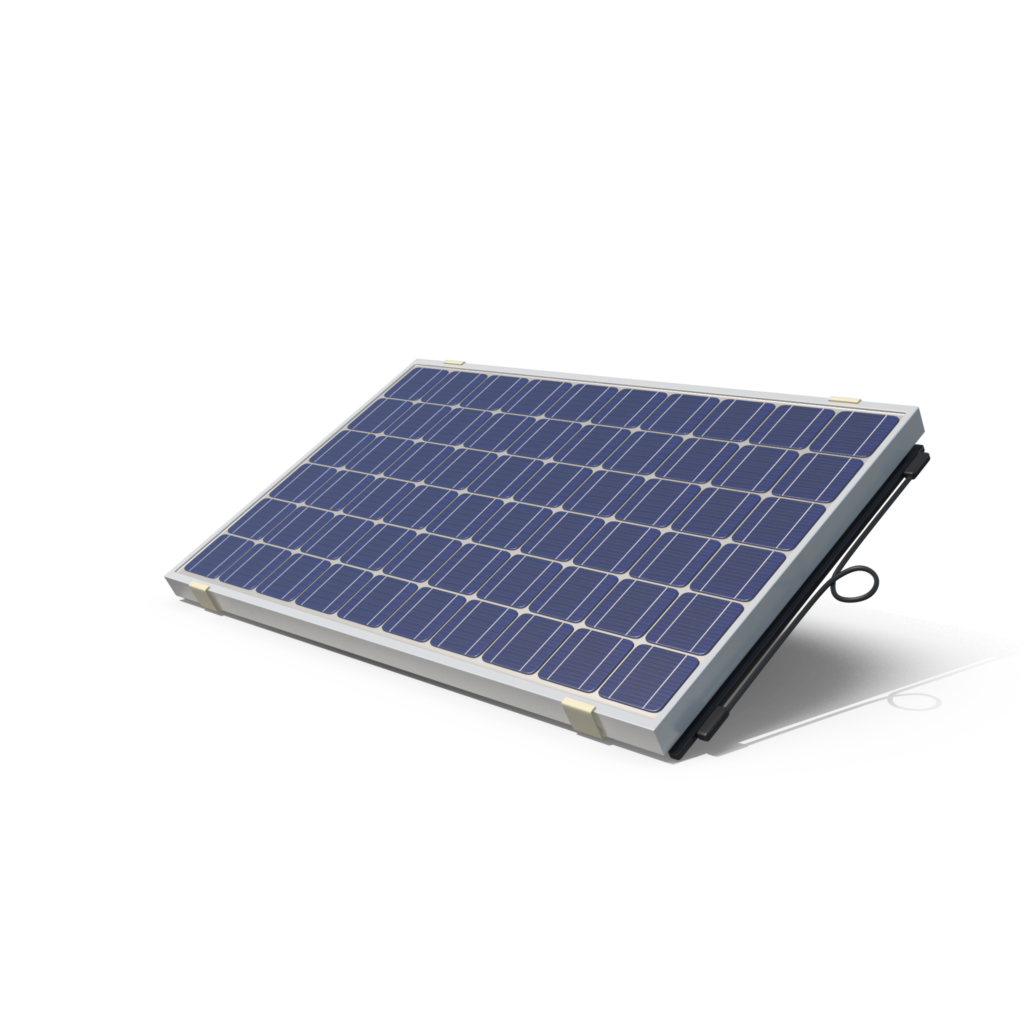
-
- Solar panel: Solar panels are devices installed on your roof or mounted on the ground or elsewhere responsible for the collection of sunlight and its conversion to usable electricity. They are usually made up of a layer of silicon cells, wiring, a metal frame, and a glass cover. When light hits a silicon cell, it causes the electrons in the silicon cells to move, initiating a flow of electric current. This movement is called the “photovoltaic effect” and explains how solar panel technology works.
Each solar panel typically has a width of 4 feet b 6 feet and weighs about 30 pounds. They come in either 60 or 72-cell formats, although some companies have produced ‘half-cut’ solar panels where each cell is cut in half, so you double the number of cells on the solar module.
Most solar panels are made from crystalline silicon-type solar cells. They are composed of layers of silicon, phosphorous, and boron. These ‘active’ cells are laid out into a grid pattern. The number of these cells used depends on the size of the panels.
2. Inverters: Inverters are responsible for converting the stored DC energy from your solar panels into usable AC electricity. There are three solar inverters: the string, microinverters, and optimizers.
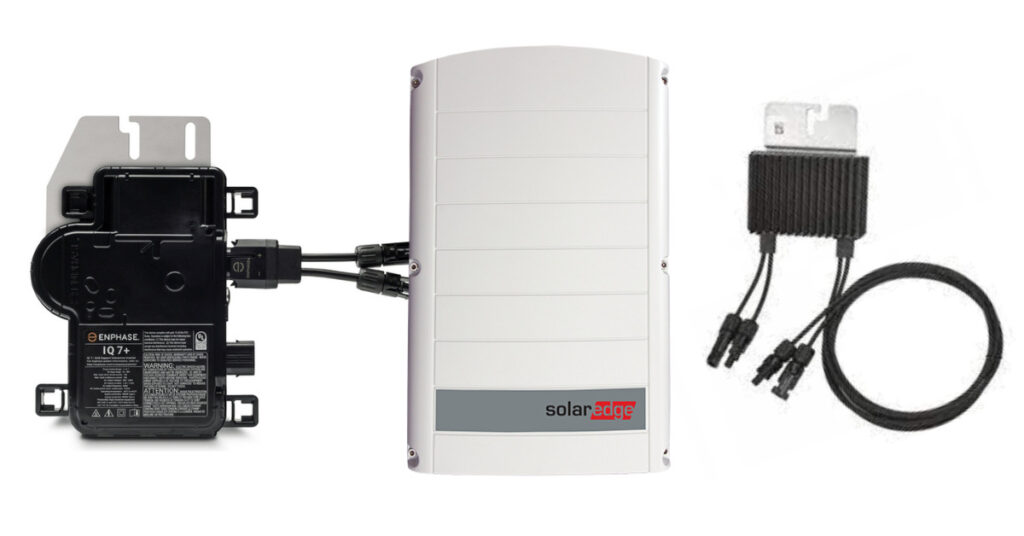
-
- String inverters: Also called centralized inverters, this inverter connects the entire array of your solar panels to your electrical panel. This is the cheapest among the inverter options available in the market. String inverters have been in solar technology for a long time, so they have proven their efficiency and durability. Multiple strings of panels can be connected to each other. The downside is the performance of all the solar panels is reduced if one of the solar panels fails. For example, if one of the solar panels is affected by shading from clouds or trees, the rest will not work efficiently.
- Microinverters: The good thing about microinverters is they work separately or individually. They are installed under each solar panel to maximize energy production. This is recommended for solar panels with shading issues, as microinverters minimize performance issues. Between the string inverter and microinverters, microinverters are more expensive.
- Power optimizers: Power optimizers are cross-over between string inverters and microinverters. Like microinverters, they are installed on each solar panel. But instead of converting DC electricity to AC electricity, the optimizers’ condition’ the DC electricity before sending it to the centralized inverter. Like microinverters, they perform well even if one or more panels are shaded or installed in different facing directions. Power optimizers cost more than string inverters but less than microinverters.
-
- Solar racking and mounting systems: To put your solar panels in place, use solar racking and mounting systems.
Solar panels should be installed in the best direction to perform at their best. In the US, south-facing panels are recommended because they will produce more power than all other orientations. West-facing solar panels, on the other hand, are ideal because it produces more power in the afternoon when the time-of-use rates are at their peak. In cases where the roof design is complex, or you need to tilt the angles of the solar panels, you can use solar rackings to adjust the position of your panels at an angle that is best for capturing sunlight.
There are two types of mounts: fixed mounts, in which the panels remain stationary, and tracking mounts, which allow panels to ‘follow’ the sun as it passes through the sky. But the tracker mounts are suitable for ground-mounted solar only.
Performance monitoring systems
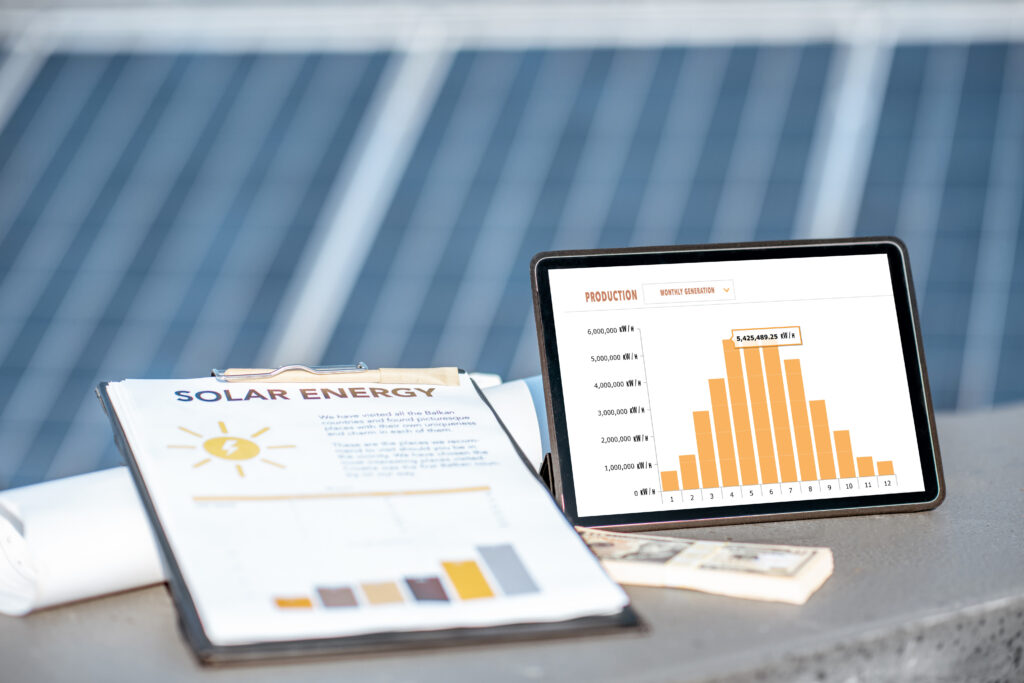
A performance monitoring system gives detailed information about your solar panel system’s performance. The performance monitoring system measures and tracks the electricity your system produces.
Solar inverters usually come with production monitoring apps you can download on your computer or smartphone to track your panels’ output. There are also options where you can track how much electricity each appliance in your household uses. The two types of monitoring systems are:
-
- On-site monitoring, where the monitoring device is physically located on your property and records the electricity produced; and
- Remote monitoring, where your solar system transmits its performance date to a monitoring service you can access online.
Monitoring your solar panel system can help you identify any performance issues to help you maximize the electricity production and financial returns of your solar system.
Why go solar?
There are numerous reasons why homeowners adopt solar, but two of the most common are to save money from electricity and to be able to keep the lights on in case of emergencies. Whatever your reason, here are some benefits you get if you switch to solar.
Financial savings: solar saves you money.
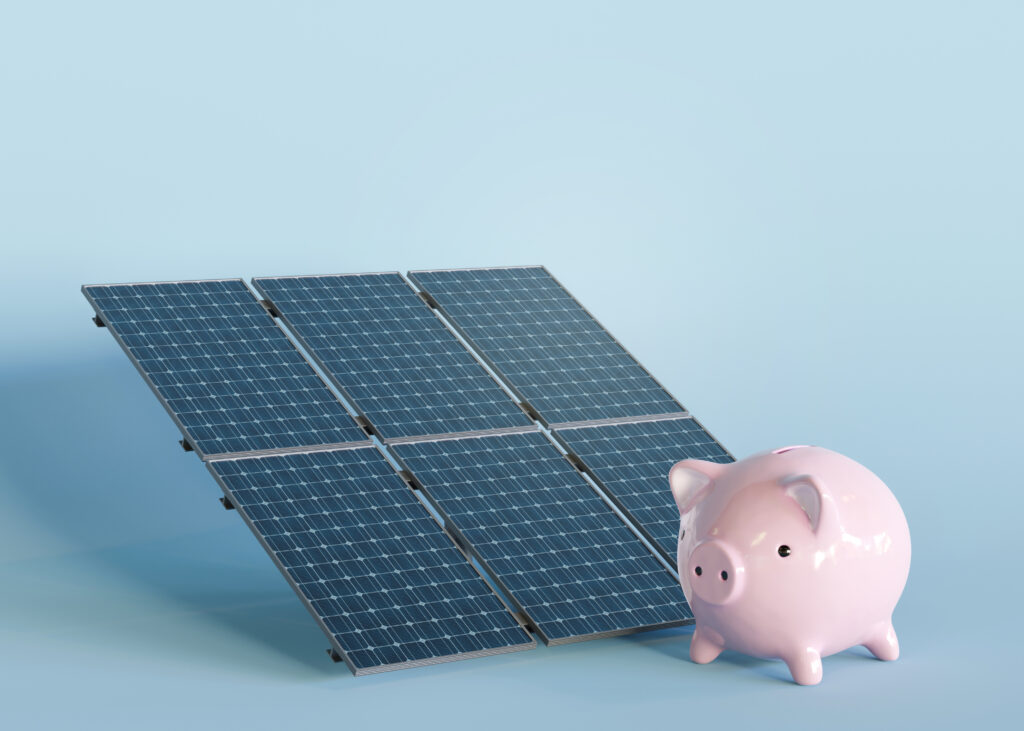
How can solar help you save money? It can lower your utility bills. Any power you produce from your solar panels is power you don’t have to purchase from your utility grid. When your system produces more energy than you’re using, that power is sent back to the grid in exchange for extra credit.
You can also store your solar energy in a solar battery and use it when the sun goes down.
Solar also increases your property value. Homes with solar sell far more than homes without.
Going solar gives you a great return on investment. Solar is one of the best investments you can make. The average homeowner can see a 20% or more return on their investment in the first 6 years upon installation.
Solar is healthier for the environment.
The whole world is after carbon emissions reductions to have a livable planet in the following years. According to Environmental Protection Agency (EPA), the electric sector accounts for 27 percent of America’s carbon emissions.
By switching to solar, you can reduce your own personal carbon footprint. A typical residential solar panel system will eliminate 3 to 4 tons of carbon emissions each year, equivalent to planting over 100 trees yearly.
Maximize solar tax incentives
There are tax incentives for solar adoption that offset nearly one-third of the purchase prices of a solar system. The 30% tax credit was recently extended through the Inflation Reduction Act; you can read more about it here– which will last until 2022. There are other solar incentives from states, such as Arizona’s $1,000 tax incentive.
Some states, municipalities, and utility companies offer up-front rebates for solar panel installation. These rebates typically further reduce your system costs by 10 to 20 percent.
There are also compelling financing and leasing options available that you can discuss with DroneQuote, that’ll ease you with payment terms. It’s entirely possible to go solar with minimal out-of-pocket investment.
Should you go solar?
Hold down your horses! Before buying solar panels, you must ensure that you are fit to have solar. Although we want everyone to buy solar panels with us, we give you honest recommendations before doing so. While solar is a good investment, healthy for the environment, and other valuable reasons, it is only for some. At a very high level, you must have a home with a southern-facing roof that’s in good condition and has minimal shading issues. However, you can still have solar panels installed in your home even if you don’t meet the following standards. Read this article to know if you are fit to have solar.
How much does solar cost?
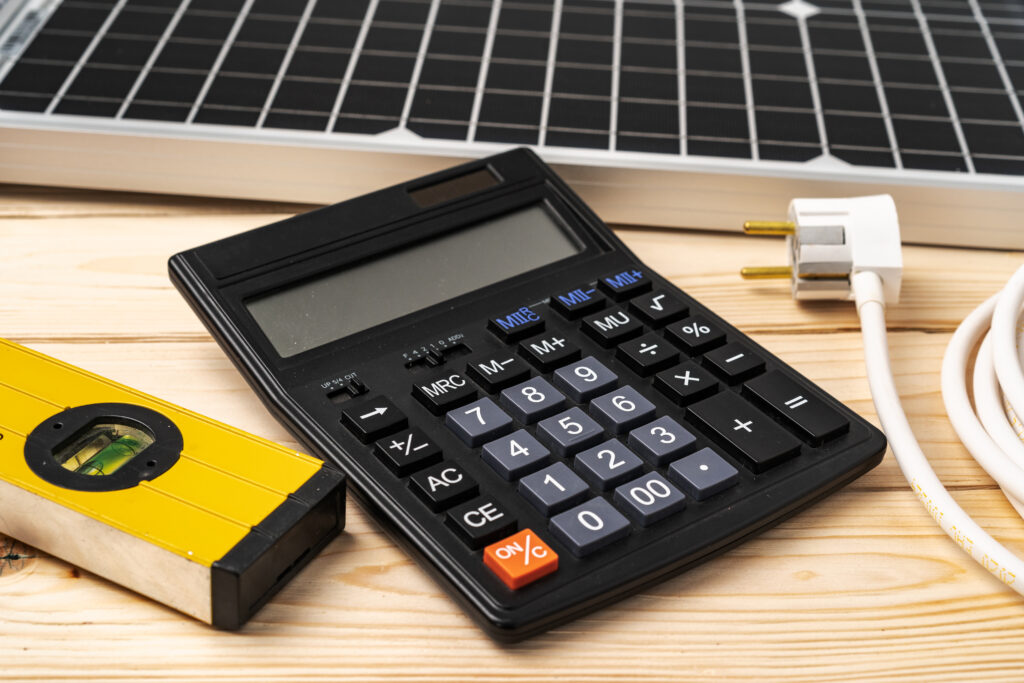
On average, solar panels cost about $16,000 or between $3,500 to $35,000, depending on the type and model. The costs of solar panels also vary per state and region.
Aside from the solar panel costs, you must also set aside a budget for the installation costs which can cost between $15000 and $25000. The installation costs depend on the location, with solar power costing more in regions farther from the equator and how many solar panels you’ll need.
How to go solar
If you have researched solar systems, their potential costs, and if you are fit to have solar, the next question is how to go solar.
Choosing solar equipment
All types of solar equipment, from solar panels to batteries, require a long list of technical specifications that help you understand the equipment’s performance, quality, and durability. It can be challenging to pick the right equipment for you, especially with all the available choices in the market today. There is some equipment that you may like but is not suited to your needs.
This is where DroneQuote can help you. We give you multiple quotes from reliable companies that you can choose from. As fiduciaries, we give you the quote base on what you need.
Choosing solar installers
After getting multiple quotes, and choosing the best one for you, comes the next step of selecting the solar installers.
We understand a lot of installers are competing in the market. With this in mind, DroneQuote has created a Solar Consumer Protection Guide for homeowners to better understand and know the right questions to ask their installers.
To give you tips, look into the workmanship warranties of the installer. Ask them what’s covered in the workmanship warranty and for how long. The workmanship warranty is specific to the installer and typically lasts between 1 and 10 years. Take note of the inclusions and exclusions of the workmanship warranty, so you know what to expect from their service.
Another tip to remember is to ask the installers if they will hire sub-contractors. Working with subcontractors is normal in the industry. However, there should be transparency from installers about who will install the system and why they use subcontractors. Knowing this information will help you identify who’s responsible for the specific work done during the installation process.
Choose an installer who has expertise in solar panel installation. Besides passing the technical requirements and getting certifications to prove the legitimacy and quality of the installer, it’s important to choose someone who knows your needs and is willing to go above and beyond your expectations. It’s easier to deal with installers who know their job by heart and clearly explain your solar needs.
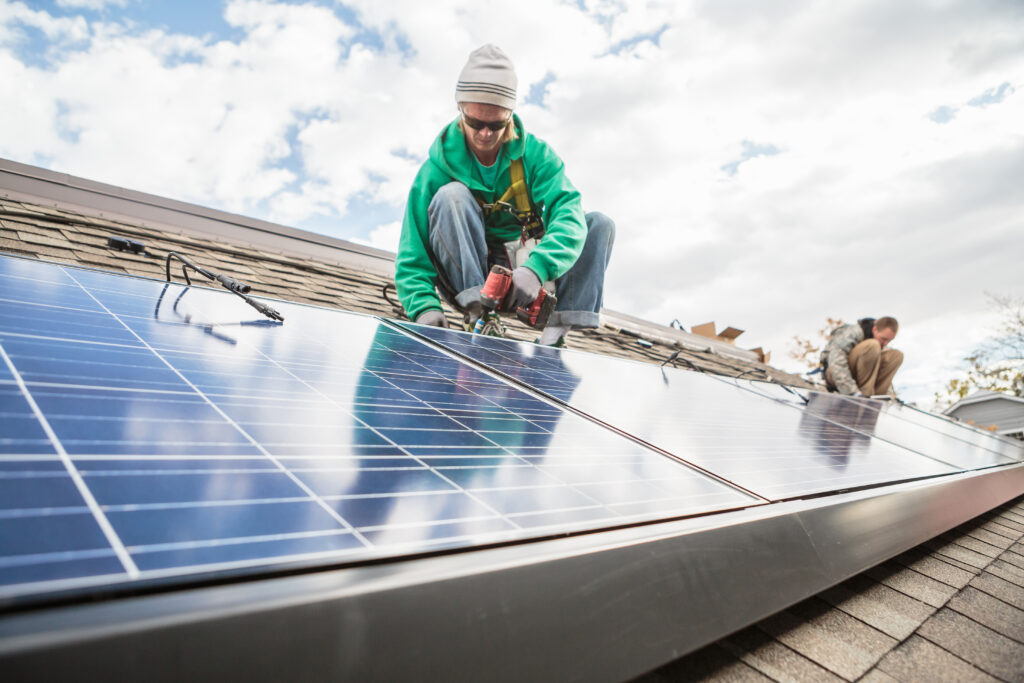
How to pay for solar
Before reaping the benefits of solar, you need to invest and pay for it first. It is heavy on the pockets. That’s why multiple financing options can help you pay for the solar system through installments.
Cash purchase: This is the best way to maximize your solar savings. If you pay upfront for the solar panel system designed to produce 100% of your electricity needs, then you’ve just paid for 25 years’ worth of electricity. The clear drawback of a cash purchase is that solar is expensive.
Solar loans are an attractive financing option because they allow you to go solar and own a system without a down payment, often at a lower cost than what you pay for electricity. Solar loans make it affordable for you to own a solar system. The implication is that when you get a solar loan, you are entitled to receive any rebates and incentives for the solar panel system. Alongside it, though, you’ll also be responsible for any future maintenance.
Solar leases and PPAs work very similarly- they are both a method of third-party ownership. The third-party owner installs the solar system at your property and then sells you the electricity produced by the solar panels at a predetermined price. This option has declined in popularity recently but played a major role in the solar industry’s growth.
With a lease/PPA, you’ll typically lock in a set rate for electricity for the next 25 years, 10 to 30 percent less than the rate you currently pay for electricity. Usually, it has a fixed monthly rate for the entire contract period. Also, the third-party owner is responsible for system monitoring and maintenance. However, you won’t be eligible to receive any financial incentives and rebates associated with solar; instead, the company that owns the system will be.
Cash vs Loan vs Lease for solar
A cash purchase is for you if:
- You’re looking to maximize your solar savings;
- You have enough tax liability to maximize the solar investment tax credit (ITC);
- Or do you have available cash for a solar panel system purchase
A solar loan is right for you if:
- You don’t want to shell out the cash required for a solar panel system;
- You still want the most savings on your electricity bill;
- And you would like to qualify for all incentives and rebates.
A solar lease/PPA is perfect for you if:
- You prefer someone else to monitor and maintain the system;
- You aren’t eligible for tax incentives;
- Or you’d like to reduce and/or lock in your monthly electric bill
